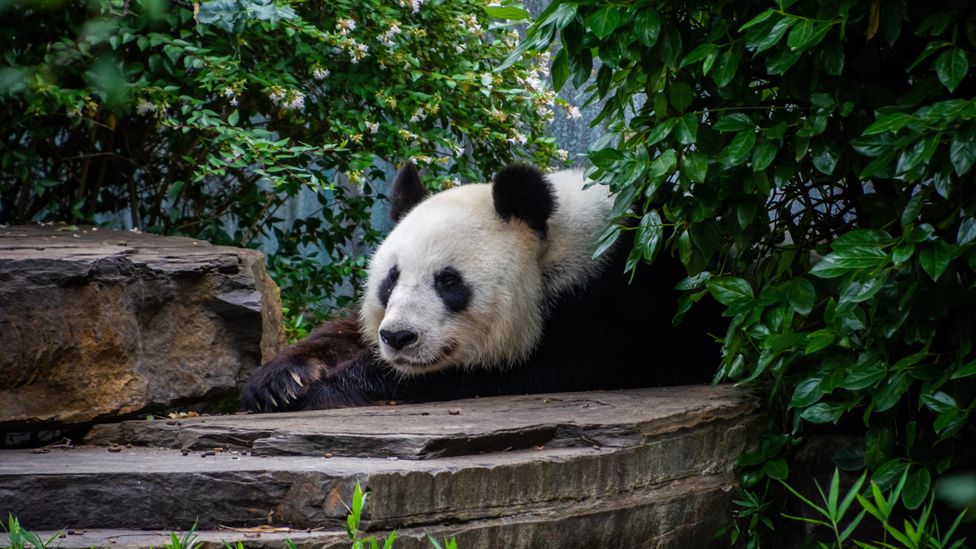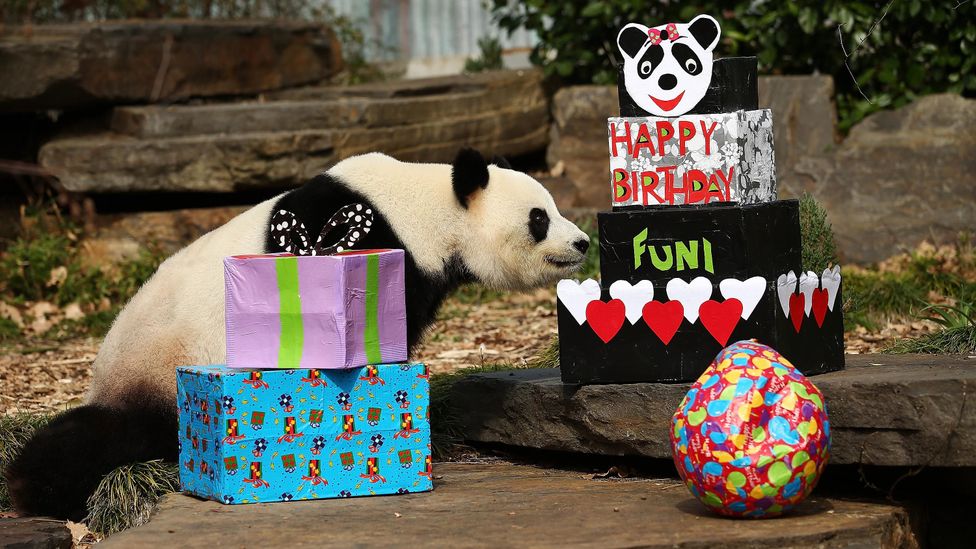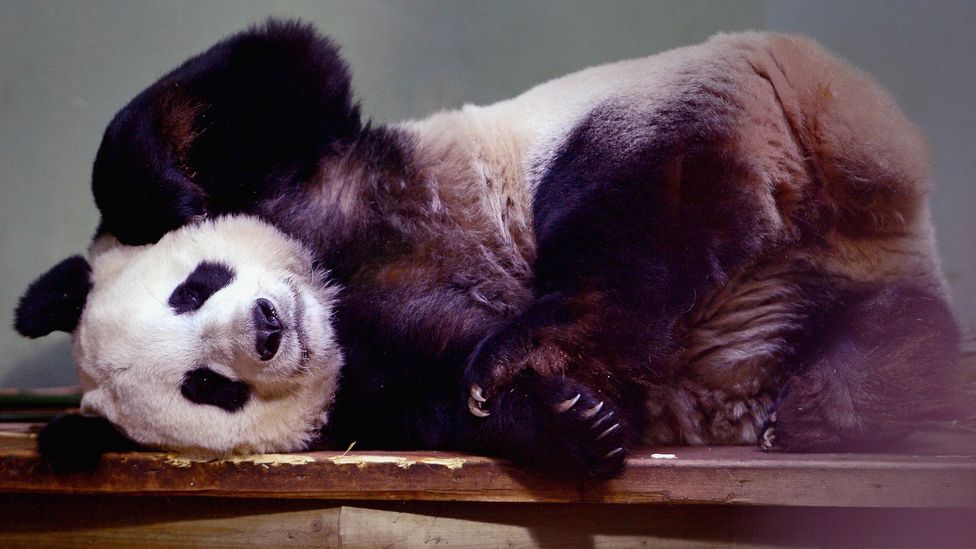How Much Money Does The Usa Spend On Pandas Yearly
Why paying for pandas is not so black and white
(Image credit:
Getty Images
)

Understanding the true value of China's panda diaspora
This articleoriginally appearedon The Conversation, and is republished under a Artistic Commons licence.
Wang Wang and Funi came to Australia from People's republic of china a decade ago. Their relationship is all-time described as complicated. Despite considerable medical assistance, they have never managed to produce offspring. It has put a big question marker over whether they volition be permitted to remain in Commonwealth of australia.
The fate of the ii giant pandas may now depend on the consequence of the federal election on May 18. Keeping the couple at Adelaide Zoo includes paying most A$1 million a year to the Chinese government.
Information technology's only another affiliate in the story of an iconic species where politics, economics and international diplomacy often eclipse conservation considerations.
Captive breeding programme
China currently has pandas on loan (or hire) to 26 zoos in 18 countries. The virtually recent zoo to join the select list was Ähtäri, Finland, which welcomed 2 pandas on a 15-yr loan in 2018. Denmark'southward Copenhagen Zoo is eagerly pending two pandas due to make it in April.
Officially information technology's all part of a captive breeding programme to help salve the species from extinction. Though their conservation status is no longer "endangered" (improving to "vulnerable" in 2016), there are still just 500 to 1,000 adult pandas left in the wild, in six isolated mountain ranges in s-central China.
The overseas placements augment China's own 67 reserves dedicated to panda conservation. Any cubs born overseas are the belongings of China and typically return to China to continue the captive breeding program.
Only the number of zoo births has been quite low. As the Smithsonian Institution'southward "panda guy" Bill McShea has pointed out, pandas in the wild have fewer bug mating or breeding: "In the wild, aggregations of male pandas form forth ridge tops in the spring, and a stream of visiting females in heat keeps the mating activity intense."
Zoos can't mimic these conditions. Since behemothic pandas are solitary animals, they are housed separately except for the few days of the year when the female person is ready to mate. Because there is no mate choice in captivity, natural mating is rare. Most captive births are the result of IVF treatments.
Although no longer "endangered" there are still just 500 to i,000 developed pandas left in the wild, in six isolated mountain ranges in Mainland china (Credit: Getty Images)
Trade considerations
This is not to say overseas zoo placements have no conservation value. But other strategic aims, such equally improving China's public image and consolidating trade relationships, loom big.
For case, the new panda enclosure at Zoo Berlin was opened merely ahead of the 2017 G20 summit in Hamburg. The opening was attended by German chancellor Angela Merkel and Chinese president Xi Jingping. The event was intrepreted as a indicate of China's endorsement of Germany as a competitor to the U.s.a. for leadership of the western earth.
Communist china's 2012 announcement that information technology would send iv pandas to Canada's Toronto and Calgary zoos was linked to successful merchandise talks, specially over a Foreign Investment Protection Agreement after almost 20 years of negotiation.
Edinburgh Zoo'due south receipt of ii pandas in 2011 was linked to trade deals worth billions of dollars.
As for the panda loan to Adelaide Zoo, it was announced by Chinese president Hu Jintao at the Asia Pacific Economic Cooperation (APEC) summit in Sydney in 2007. On the aforementioned twenty-four hours Australian prime minister John Howard and President Hu also appear plans for a yearly "security dialogue".

Fu Ni the giant panda is treated to specially prepared panda treats for her birthday at the Adelaide Zoo in 2015 (Credit: Getty Images)
Furry ambassadors
Panda diplomacy is believed to date dorsum to the seventh century, when the Empress Wu Zetian sent a pair equally a souvenir to Nihon. In the 20th century Mao Zedong embraced the strategy, gifting pandas to fellow-travelling communist nations. When Richard Nixon went to Cathay in 1972, Deng Xiaoping presented him with two pandas.
Since then the recipients have been well and truly weighted towards wealthy capitalist nations. There are two reasons for this.
Kickoff, Communist china uses the pandas to improve its epitome and deepen relationships with nations able to supply it with valuable resource and technology. This has been aptly described as an exercise in "soft cuddly power".
Second, since the devastating 2008 Sichuan earthquake, Communist china has used panda loans to pay for local conservation efforts, mend damaged panda conservation facilities and conduct giant panda inquiry.

Edinburgh Zoo's receipt of two pandas in 2011 was linked to trade deals worth billions of dollars (Credit: Getty Images)
Financial strings fastened
For recipient zoos keeping pandas is an expensive concern.
Consider Adelaide Zoo'southward costs even with the federal authorities covering the pandas' A$one million annual rental fee. From the outset, the zoo went heavily into debt to build a specialist panda enclosure (at a cost of about A$8 1000000).
Looking subsequently each panda also costs many hundreds of thousands of dollars a year. Pandas are the most expensive creature to keep in a zoo, costing about five times equally much as an elephant.
Food alone is a logistical headache. Giant pandas are not biologically herbivores but for some reason they developed a taste for bamboo about vi,000 years ago and stopped eating a varied diet, including meat. Bamboo, however, is low in nutrients and hard to digest, which means pandas have to swallow a lot and then residuum. Each twenty-four hour period an adult panda can munch through virtually 12 kilograms of fresh bamboo – and because they're fussy eaters, they need to be given more than double that amount.
All of this means a panda must be treated like a business proposition. Volition there be a return on investment? Will their cost exist justified by the extra visitors they draw to the zoo?
Adelaide Zoo had loftier expectations that were speedily dashed. Similar other zoos, there was a large initial spike in zoo visits, merely by 2010 company numbers had returned to pre-panda levels. It was articulate Funi and Wang Wang would non add A$600 1000000 to the South Australian economic system over a decade as predicted. In their honeymoon year, research suggests, they brought in just A$28 1000000. Adding a baby panda would improve their attraction value considerably.
Beyond financial value
It'southward therefore easy to run into why some some phone call pandas white elephants.
But let's non overlook the important contribution the panda diaspora has fabricated to pandas moving off the "endangered" listing. Part of this is due to the loan fees paid to Mainland china. The money has funded panda conservation research and projects at Bifengxia and Wolong, in China's Sichuan province.
There is also value in Australian zoo keepers, veterinarians and scientists being part of a global knowledge network.
Nosotros even so know so little most panda behaviour and the ecology effects that endanger them. Nosotros accept made a small contribution with our own inquiry into strategies to reduce stress in captive giant pandas. If Funi and Wang Wang remain in Adelaide, the zoo has the potential to provide for further valuable insights.
As scientists who intendance well-nigh animals and animal welfare, we believe it is important to besides remember Funi and Wang Wang take helped connect hundreds of thousands of children and adults alike to nature.
These two giant pandas have their own personalities and close bonds with people who treat them everyday. Nature is non only an economic article but vital for our survival. If you have not withal visited Funi and Wang Wang, take the opportunity while you can.
Editor's Note: This commodity was amended May 30 to cite the new panda enclosure in Berlin at 'Zoo Berlin' not at Berlin'south Tierpark Zoo as previously stated.
To comment on this story or anything else you have seen on BBC Capital, please head over to our Facebook folio or message us on Twitter .
If yous liked this story, sign up for the weekly bbc.com features newsletter called "If You Only Read six Things This Week". A handpicked option of stories from BBC Futurity, Culture, Upper-case letter and Travel, delivered to your inbox every Friday.
Source: https://www.bbc.com/worklife/article/20190516-why-paying-for-pandas-is-not-so-black-and-white
Posted by: nielsonhattacte.blogspot.com

0 Response to "How Much Money Does The Usa Spend On Pandas Yearly"
Post a Comment